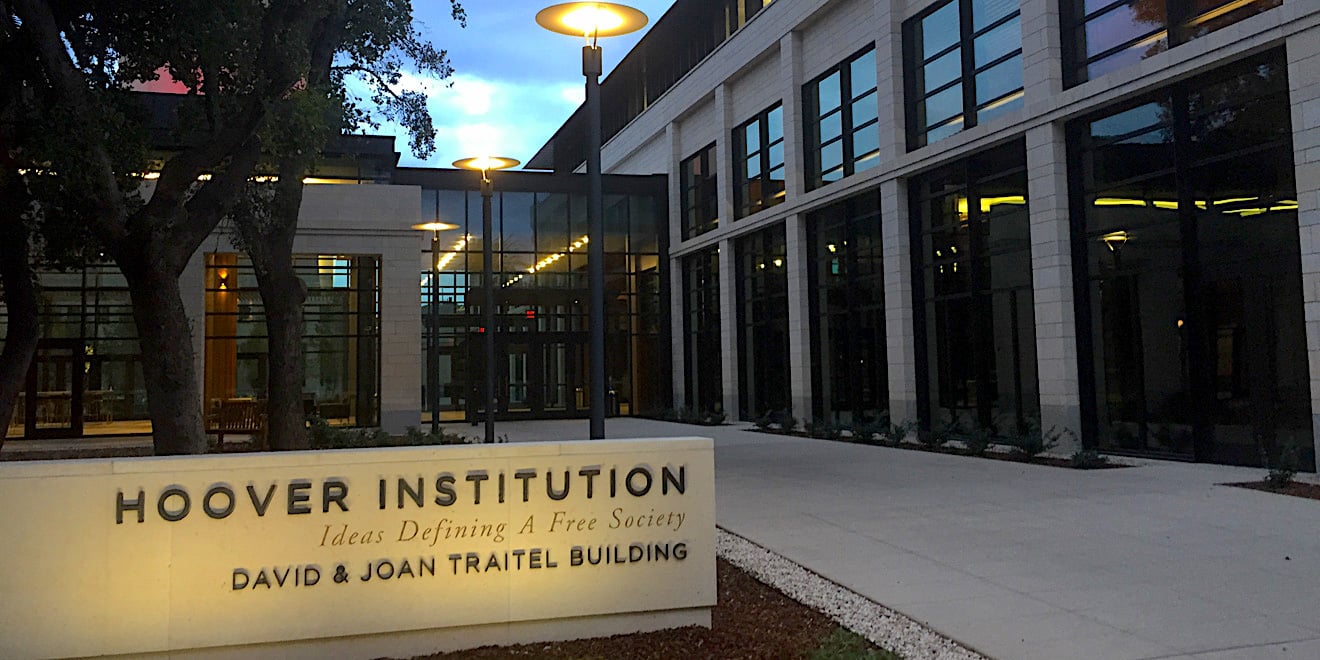The Stanford Emerging Technology Review (SETR), a “one-stop-shopping primer” for policymakers on advancements in 10 key emerging technology areas, launched its first report in November.
As the product of a months-long collaboration between the Hoover Institution and School of Engineering, SETR seeks to help both the private and public sectors “better understand the technologies poised to transform our world,” according to the review.
The review, which will be released annually, joins an active body of literature from existing tech policy initiatives, think tanks, conferences and policy actors that seek to influence tech’s transformative potential. At the Nov. 14 launch, Dean of Engineering Jennifer Widom underlined SETR’s privileged access to Stanford’s faculty as its distinctive feature.
“The review is fairly unique in its focus on academia and its focus on harnessing the knowledge that we have in these areas,” Widom said.
This year, SETR includes sections on a range of sectors, from artificial intelligence to semiconductors and sustainable energy technologies. Although these technologies are often siloed into their independent pursuits, chair members at the launch urged a more interconnected understanding of them.
“Advances in one field often lead to advances in others,” said Herbert Lin, a senior research scholar at the Center for International Security and Cooperation (CISAC), citing “feedback loops” between developments in materials science, semiconductors and artificial intelligence.
During the launch, University President Richard Saller also emphasized the breadth and depth of faculty expertise that went into the review.
“Stanford is uniquely qualified for this kind of project,” Saller said.
He commended the diversity of perspectives involved in creating the 157-page report, including five of Stanford’s seven schools and 11 of its 15 independent institutes. Seventy-five faculty members, along with many of their graduate students and postdocs, ultimately contributed to the discussions on SETR.
During the launch, each of the 10 technologies in SETR was represented by a faculty expert who could speak to how it would change the way humans interacted with the world and each other.
Mechanical engineering professor Allison Okamura M.S. ’96 Ph.D. ’00, a roboticist at Stanford, spoke at the launch about how robots would “transform many of our lives through elimination, modification or creation of jobs and functions.
Chemical engineering professor Zhenan Bao elucidated the various applications of nanotechnologies in society, such as making solar cells more efficient and cancer detection more sensitive. “Materials science is the platform technology underlying many of the advances for other research fields,” she said.
Economics professor and co-chair of SETR John Taylor Ph.D. ’73 also emphasized the importance of diverse perspectives in policy-making. Speaking on his conversations with Secretary of State and Marine Corps General John Kerry, Taylor said, “We can learn from each other … about how economics and military and politics work together. It’s something we need to do more of.”
Many faculty members, according to Widom, have learned “the ability to bring what they’re working on to others who want to hear about it and want to understand it, but aren’t in the lab.”
As an academic institution with a multi-disciplinary faculty, Stanford is uniquely positioned within the policy-making ecosystem to be a source of both technical knowledge and long-term considerations, which SETR embodies, according to Patrick Biggs, an army engineer and national security affairs fellow at the Hoover Institution.
“We talk about technological dominance in the United States, which I think is probably not the best way to categorize it,” Biggs said in an interview with The Daily. “I think what we have is academic dominance.”
According to Biggs, integrating an emerging technology into a deployable capability at the Department of Defense can take several years. Academic expertise is crucial to expediting that process and ensuring that all contributors know what they need to know in order to leverage new technologies to benefit our nation, he said.
Beyond providing technical knowledge, Biggs assures SETR can also foster conversations about the ethical use of technologies that other organizations, such as private industry or even government, are not internally incentivized to encourage.
“What is the difference between a nuclear bomb and a prolonged bombing campaign?” Biggs said. “From a military perspective, not a lot. But if you have a scientist who can explain … radiation poisoning and radioactive decay … the average army leader probably wouldn’t have known those things without academic information.”
However, according to the review, academia also faces challenges when it comes to finding a bridge to industry and government. SETR is partly a response to roughly 30 years of a technology deregulation movement. There is also a growing concern that, as outlined in its introduction, academia is losing influence and talent to private industry, thereby “accelerating the development of commercial products while eroding the foundation for the future.”
However, Taylor said he did not immediately see a growing disconnect.
“I’ve had four stints [in public policy] outside of Stanford, coming back each time, and there’s always a connection,” he said. “There’s more connectivity than people realize,” he said.
In addition to the annual report, SETR will also produce reports, briefings and educational products throughout the year to help policymakers in a more timely, responsive and approachable manner. Although SETR’s primary audience is largely external to Stanford, Taylor hopes its initiatives will also encourage interdisciplinary conversations among students.
“It’s very important for students to understand what an unusual place Stanford is … where technology and government and business connect,” he said.
